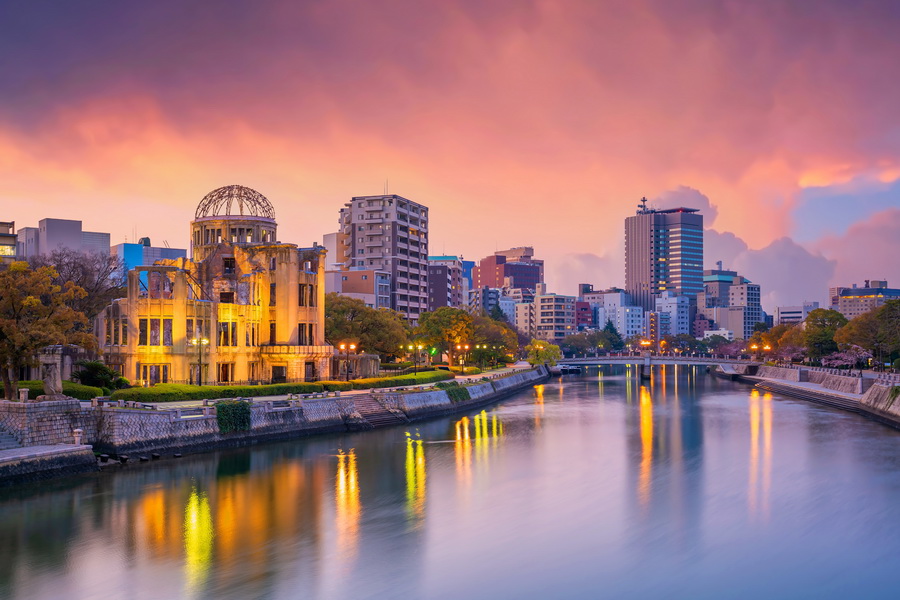
Tours, Attractions and Things to Do in Hiroshima
Hiroshima Travel Guide
Hiroshima (広島) is a vibrant Japanese city known for its modern architecture, lush gardens, and bustling streets. Yet, beneath this prosperity lies a powerful history of resilience and rebuilding. The devastation of Hiroshima during World War II transformed it into a global symbol of remembrance, hope, and the pursuit of peace.
As the capital of Hiroshima Prefecture (広島県) and the largest city in the Chugoku Region (中国地方) on Honshu Island (本州), Hiroshima offers a unique blend of history and culture. Discover its remarkable journey and must-see attractions with our best travel guide to Hiroshima.
Hiroshima Tours
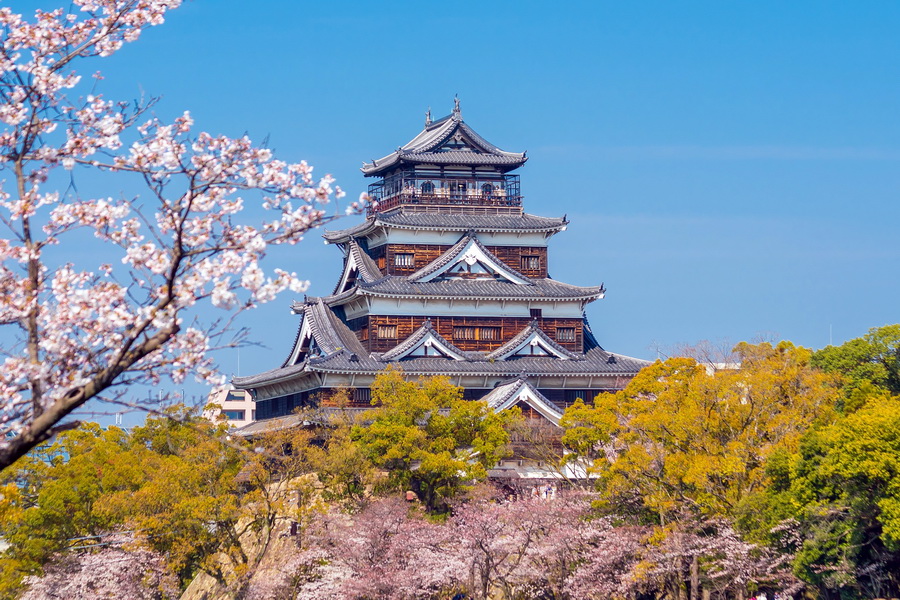
Hiroshima tours are extremely popular in Japan, attracting over 11 million visitors annually. Most travelers come to learn about the tragic events of August 1945. The city is a hub for peace tourism, a sector dedicated to preserving the memory of this tragedy and promoting peace. The main Hiroshima tours focus on landmarks like Peace Memorial Park and the Atomic Bomb Dome (Genbaku Dome).
However, Hiroshima is worth visiting not only for its connection to peace tourism but also for its historical sites, modern attractions, beautiful nature, unique cuisine, and rich cultural traditions.
Although Hiroshima is located hundreds of kilometers from major cities like Tokyo, Kyoto, and Osaka, day trips to Hiroshima from Tokyo are quite common. For a more immersive experience, plan for about 2 days in Hiroshima to fully absorb the city's atmosphere and explore both the iconic and lesser-known attractions.
Best Time to Visit Hiroshima
The best time to visit Hiroshima is from March to May, when the city enjoys plenty of sunny days, cherry blossoms line the streets, and temperatures range from 15 to 25°C—perfect for long walks. Autumn is also a popular time to visit Hiroshima, as the vibrant fall foliage paints the parks in bright shades of yellow and red.
Hiroshima’s southern location gives it a mild climate. Compared to northern cities, Hiroshima has higher temperatures and more sunny days. Summers are hot and humid with frequent rains, while winters are cold but generally sunny. Hiroshima temperature by month ranges from 20 to 32°C in June through August, 8 to 28°C from September to November, and stays above freezing in winter, averaging 1 to 12°C from December to February.
A significant number of visitors gather in Hiroshima on August 6 for annual memorial ceremonies honoring the victims and survivors of the 1945 atomic bombing.
History of Hiroshima
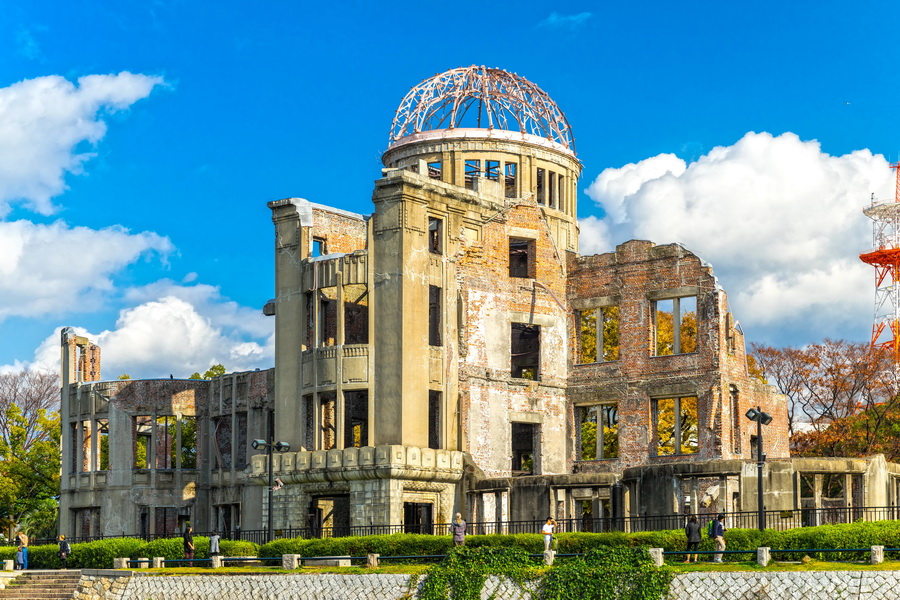
Hiroshima was founded in 1589 with the construction of Hiroshima Castle (広島城) by the daimyo Mori Terumoto (毛利辉元). At the time, the castle was the largest in western Japan and remains an impressive symbol of the city's history and resilience.
The name Hiroshima (meaning "wide island") originated in the 16th century, replacing the former name Gokamura (五ヶ村), which meant "Five Villages".
From the 17th to 19th centuries, Hiroshima thrived under the rule of the Asano clan, becoming a wealthy trade hub. By the Meiji period in the 19th century, it had gained prefecture status and emerged as a center for heavy and chemical industries.
The most defining event in Hiroshima’s history is the atomic bombing on August 6, 1945. The city was the first in the world to experience a nuclear attack when the U.S. bomber Enola Gay dropped the bomb, which exploded 600 meters above ground. In 10 seconds, much of Hiroshima was destroyed, resulting in the deaths of approximately 140,000 people. Survivors of the bombing, known as hibakusha (被爆者), continue to receive government support.
Despite its tragic past, Hiroshima has rebuilt into a thriving, modern city while preserving its history as a symbol of peace and resilience.
Landmarks and Attractions in Hiroshima
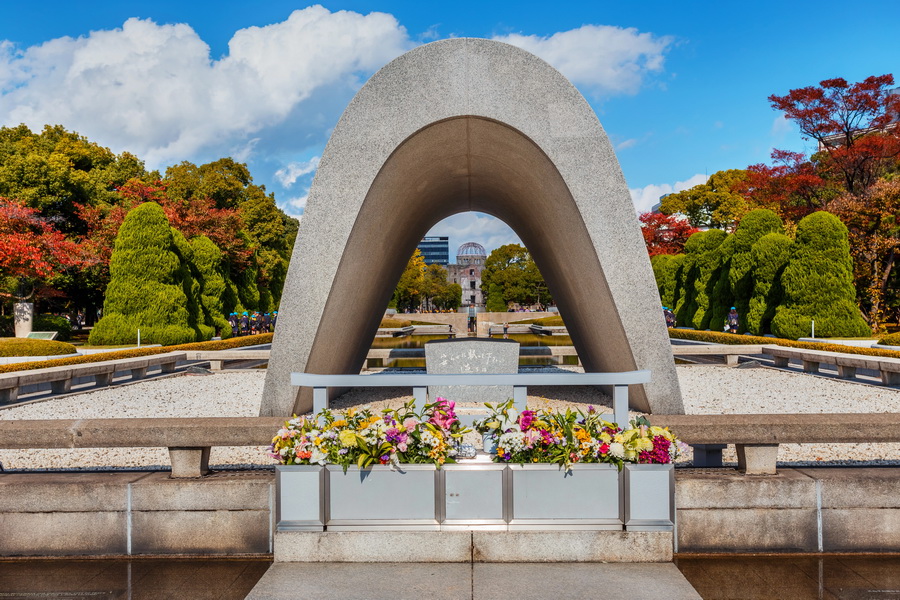
If you're wondering what to see in Hiroshima in one day, the city's top attractions include the Peace Memorial Park and Hiroshima Castle.
Begin your Hiroshima trip at the Hiroshima Peace Memorial Park (広島平和記念公園)—the spiritual heart of the city, established in 1949 at the epicenter of the atomic blast. The 12-hectare park hosts several monuments and museums, including the heartbreaking Memorial to the Victims of the Atomic Bombing, the Children’s Peace Monument, and the UNESCO-listed Atomic Bomb Dome (原爆ドーム), the only building near the epicenter that survived the explosion. The park is also home to the survivor trees or A-bombed trees (hibakujumoku), which miraculously survived and regrew after the bombing, symbolizing hope and resilience.
Just a short walk from the Peace Park stands the Hiroshima Castle (Hiroshima-jō, 広島城), a majestic five-story structure surrounded by a moat. Built in the 16th century as the residence of Hiroshima’s rulers, the castle is often referred to as Carp Castle (Rijō, 鯉城), named after the area known as "Carp Bay". Though the original was destroyed in 1945, it was meticulously rebuilt in 1958. Today, the castle houses a history museum, and the top floor offers panoramic views of the city.
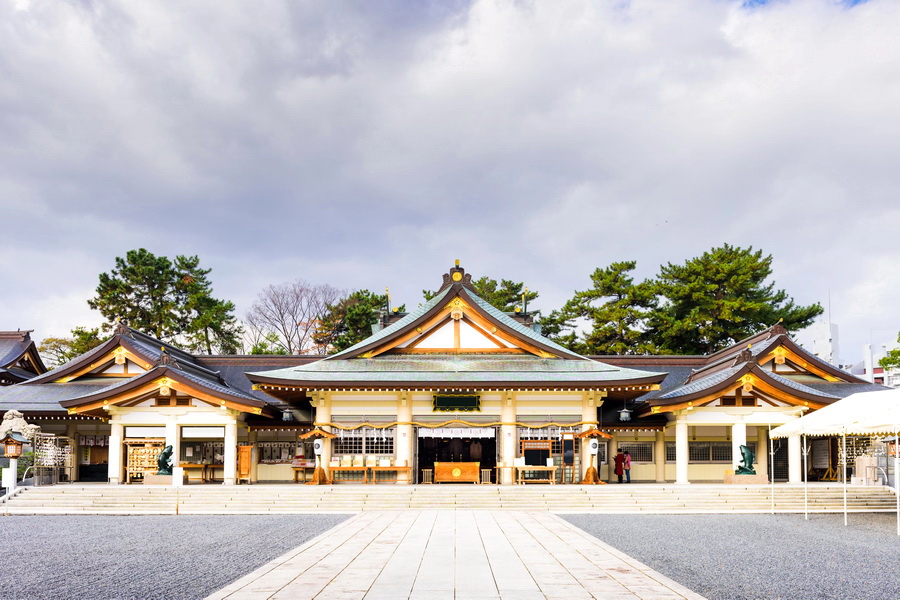
For those with extra time, explore lesser-known but equally fascinating sites:
Hiroshima Gokoku Shrine (広島護国神社), the city's main Shinto shrine, originally built in 1868 and reconstructed in 1965 after the war.
Hiroshima Toshogu Shrine (広島東照宮), dedicated to Tokugawa Ieyasu (徳川 家康), featuring the Kinko Inari Shrine (金光稲荷神社), believed to bring prosperity and success.
Hiroshima Peace Pagoda (二葉山平和塔), a silver Buddhist stupa perched atop Mount Futaba.
Orizuru Tower (おりづるタワー), a modern 13-story structure with an eco-style observation deck offering stunning views of the Atomic Bomb Dome. A spiral slope connects the top to the ground floor, providing a unique alternative to the elevator.
These iconic and hidden landmarks make Hiroshima a diverse and reflective destination for any visitor.
Things to Do in Hiroshima
Entertainment, parks and shopping in Hiroshima
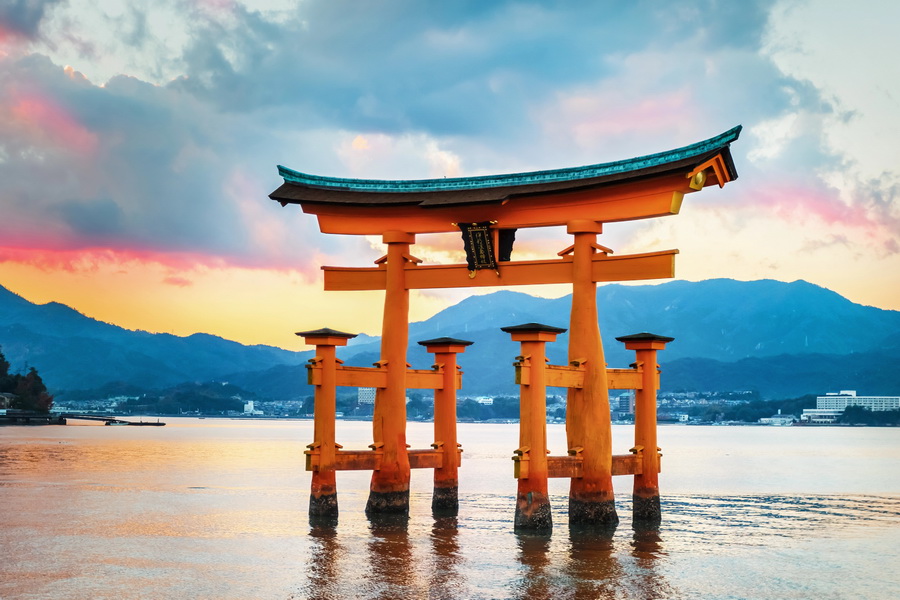
In addition to visiting famous attractions, Hiroshima offers unique experiences that enrich your trip.
Take a VR tour at the Peace Park, where you can witness Hiroshima before and after the tragic events of 1945, offering a powerful and immersive perspective on the city's history.
For evening entertainment, explore Nagarekawa Street (流川)—the heart of Hiroshima’s nightlife, filled with bars and restaurants offering local delicacies and vibrant atmospheres.
A visit to Miyajima Island (宮島) is often included in Hiroshima tours. This iconic destination is known for the floating red torii gate of Itsukushima Shrine (厳島神社), which stands in the water and is one of the most photographed sites in Japan. From the island’s highest point, accessible by cable car or hiking trails, enjoy breathtaking panoramic views of Hiroshima and the surrounding area.
These experiences provide a deeper connection to Hiroshima’s past and present, making them essential parts of any visit.
Parks in Hiroshima
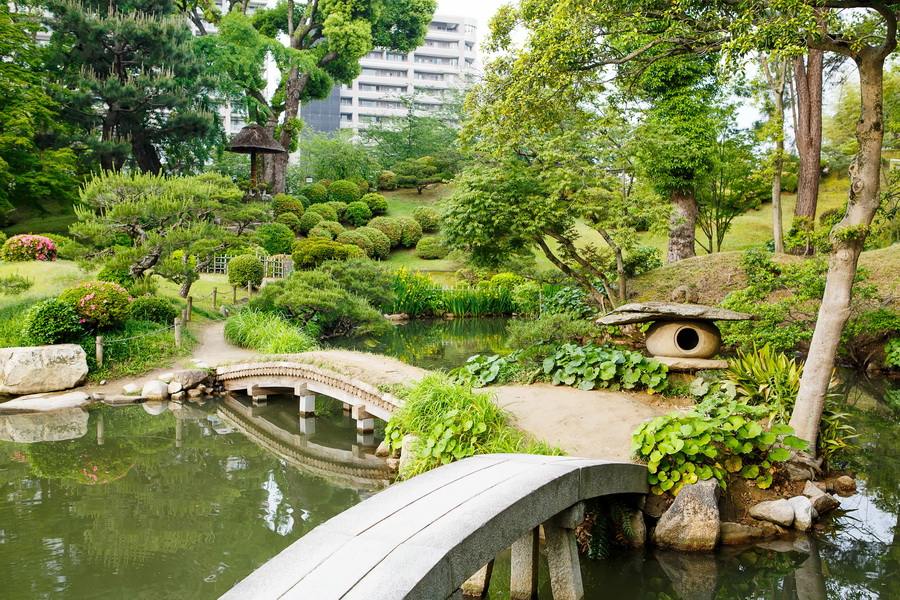
Hiroshima is known for its stunning natural landscapes, beaches, and peaceful city parks. One of the most famous is Hiroshima Shukkeien Garden (縮景園), founded in the 17th century. This tranquil space features all the elements of a traditional Japanese garden—central ponds, flowing streams, arched bridges, and meticulously arranged trees and pathways.
To the east of the city lies Setonaikai National Park (瀬戸内海国立公園), Japan’s largest national park, spanning nearly 67 hectares. Known for its rich biodiversity, the park offers a variety of outdoor activities, including fishing, camping, hiking, and catamaran cruises.
Other notable parks in Hiroshima include Hiroshima City Forest Park (広島市森林公園), which is perfect for outdoor enthusiasts, and Hijiyama Park (比治山公園), located on a small hill and offering panoramic views of the city. Asa Zoological Park (広島市安佐動物公園) is another highlight and ranks among the biggest zoos in the country, housing more than a thousand animals from Africa, Asia, and Japan. These green spaces provide the perfect escape into nature and highlight Hiroshima’s blend of urban beauty and serene landscapes.
Shopping in Hiroshima
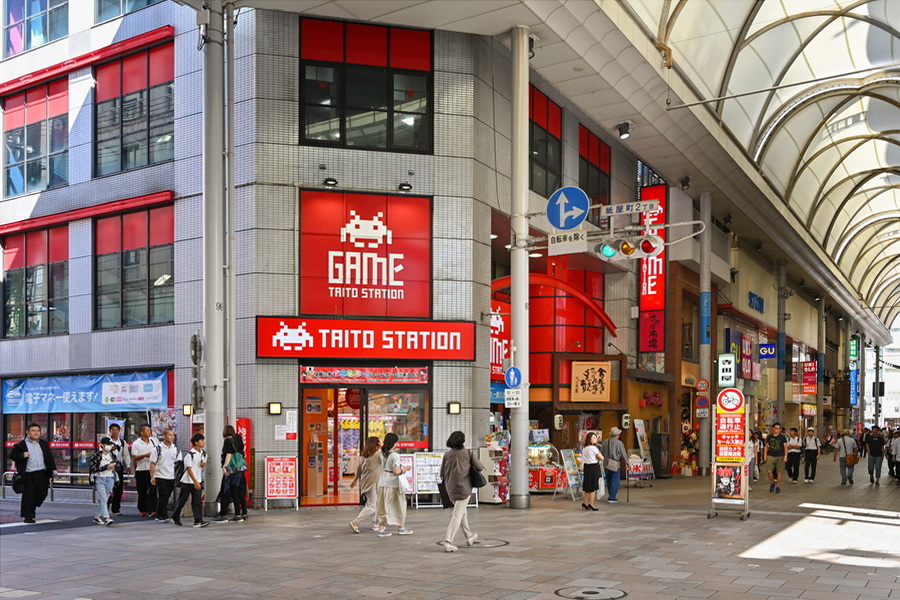
In Hiroshima, you can shop for clothing, food, and souvenirs at large shopping centers like AEON Mall, Sunmall, Hiroshima PARCO, and Ekie Hiroshima, as well as in smaller local stores. One of the most popular shopping destinations for both locals and tourists is Hondori (本通), the largest shopping street in the Chugoku region (中国地方), stretching over half a kilometer in the city center.
Souvenirs in Hiroshima often depict the city’s major landmarks and reflect the theme of peace. They can be found at the Rest House Gift Shop, the Hiroshima Peace Museum store, on the first floor of Orizuru Tower (おりづるタワー), and on Miyajima Island. Ekie Store (エキエ) at Hiroshima Station (広島駅) also offers unique keepsakes made from recycled paper cranes with the inscription "Made with recycled paper cranes sent to Hiroshima and Nagasaki with a wish for Peace from around the World".
In addition to peace-themed souvenirs, memorabilia from Hiroshima’s famous baseball team, the Hiroshima Toyo Carp, are highly popular. These can be purchased at Mazda Stadium or at the store located in Fukuya Station (福屋駅).
Museums in Hiroshima
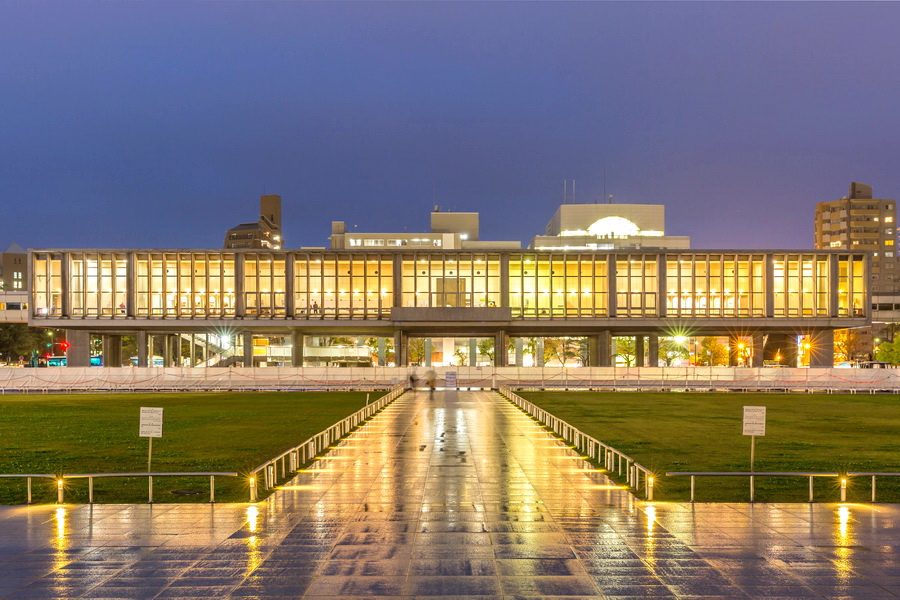
The Hiroshima Peace Memorial Museum (広島平和記念資料館) is Hiroshima's most important museum, having opened in August 1955. Over the past 70 years, it has become one of the most visited museums in the world, attracting over one million visitors a year - a figure comparable to that of the renowned MoMA in New York.
The museum's main collection features the preserved belongings of those who died in the tragic events of August 6, 1945. Among the most striking exhibits are numerous stopped clocks, all frozen at exactly 8:15 a.m., the moment of the explosion. These haunting artifacts serve as a powerful reminder of the horrors of nuclear weapons, reinforcing the museum's mission and motto, "No more Hiroshimas".
Opened in 1978, the Hiroshima Museum of Art (ひろしま美術館) was inspired by the designs of the Atomic Dome and Itsukushima Shrine. Its collection includes works by famous 20th-century European artists such as Picasso, Degas, Manet and Monet, as well as Japanese masterpieces.
The Hiroshima City Museum of Contemporary Art (MOCA, 広島市現代美術館) opened in 1989 and is located in Hijiyama Park. It houses around 1,700 works, with a focus on pieces that emphasise Hiroshima's connection to modern art.
Numaji Transportation Museum offers an engaging history of transportation worldwide, featuring numerous interactive exhibits that appeal to children and families.
The Miyajima History and Folklore Museum provides insight into the island’s rich past and Itsukushima Shrine. Located in the former residence of the affluent Heike family, the museum’s authentic setting enhances its historical charm and cultural significance.
Food in Hiroshima
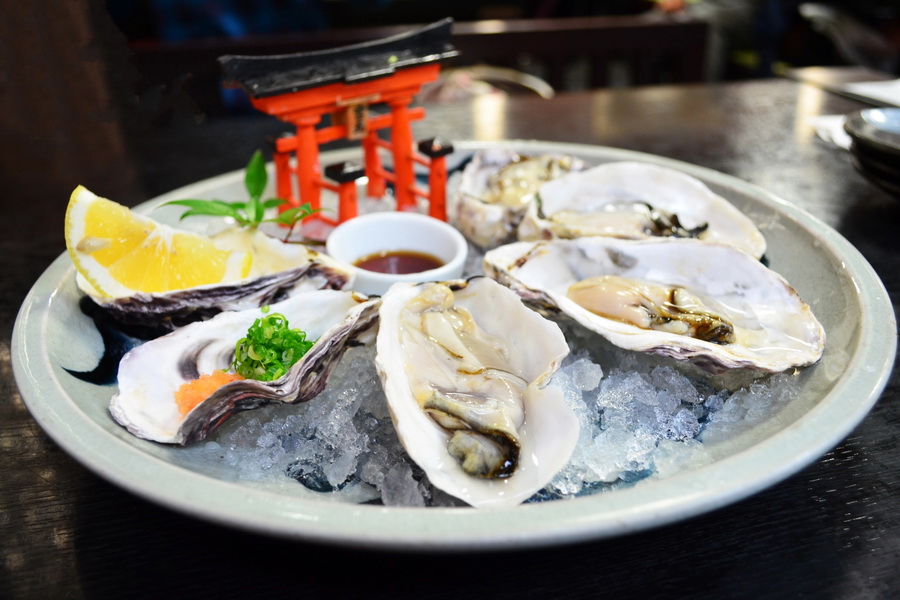
Hiroshima is renowned for its distinctive cuisine, with several iconic dishes that define the region’s gastronomic identity.
Okonomiyaki (お好み焼き) stands out as Hiroshima’s signature dish and a must-try for visitors. Unlike the Osaka version, Hiroshima’s okonomiyaki features more cabbage, resulting in a thicker, layered texture. One of the most famous places to enjoy this delicacy is Mitchan Sohonten (みっちゃん商店), though it can also be found at Hiroshima Full Focus Building and Hiroshima Station (広島駅).
Oysters (牡蠣) hold a special place in Hiroshima’s culinary scene, as the prefecture is Japan’s leading oyster producer. Fresh oysters are prepared in various ways, from grilling to steaming, and are a staple for both locals and tourists.
Momiji Manju (紅葉饅頭), a delightful maple leaf-shaped dessert, is another symbol of Hiroshima. Originating from Miyajima Island, these small cakes come with a variety of fillings, such as matcha, anko paste, and chocolate, reflecting the maple trees that flourish in the region. Momiji Manju is not only a treat but also one of the most popular souvenirs from Hiroshima.
How to Get to Hiroshima
The best way to get to Hiroshima from major cities is by train, plane, or bus, but the fastest and most convenient option is the bullet train.
The bullet train from Tokyo to Hiroshima is the Nozomi Shinkansen, which takes just 4 hours to cover the 800-kilometre distance. The Nozomi route also passes through Kyoto and Osaka. The bullet train from Osaka to Hiroshima takes 1 hour and 25 minutes, while the trip from Kyoto lasts about 1 hour and 35 minutes. Hikari and Sakura trains are slower but fully covered by the JR Pass, with a total journey time of about 5 hours.
Daily flights are also available from Tokyo, with Japan Airlines (JAL) and All Nippon Airways (ANA) offering 90-minute routes. However, Hiroshima Airport is nearly an hour away from the city centre, which can be less convenient.
Another option is to take an overnight bus from Tokyo to Hiroshima, which takes 10-12 hours. This is a more affordable option and allows you to arrive in the city early to maximise your sightseeing time.
City Transport in Hiroshima
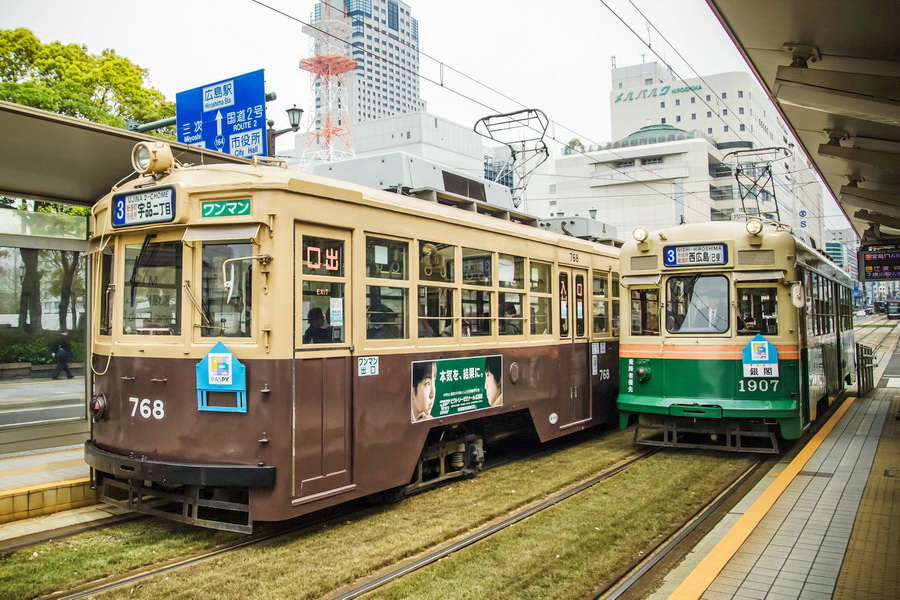
Public Transport
The most popular way to get around Hiroshima is by tram, with eight lines connecting the city's main attractions. Visitors can purchase the Hiroshima 1-day pass for unlimited tram rides. For an additional fee, some passes also include a steamboat trip to Miyajima Island and a 25% discount on the Miyajima Ropeway.
Hiroshima loop buses are another convenient transport option. Departing from Hiroshima Railway Station, they stop at major landmarks such as Hiroshima Castle, Shukkeien Garden, and Peace Park. The Loop buses are fully covered by the JR Pass, making them a hassle-free choice for tourists exploring the city.
Is Hiroshima Safe to Visit?
Despite being the site of a nuclear attack, Hiroshima is now completely safe for both residents and visitors. The city has undergone extensive rebuilding and revitalisation, transforming into a thriving, modern metropolis. Its peaceful streets, green parks, and cultural landmarks make it one of Japan’s most welcoming destinations.

